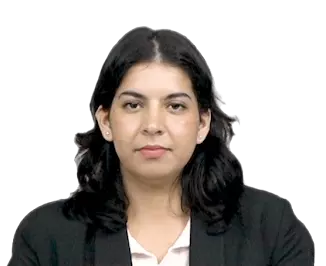- Home
- Medical news & Guidelines
- Anesthesiology
- Cardiology and CTVS
- Critical Care
- Dentistry
- Dermatology
- Diabetes and Endocrinology
- ENT
- Gastroenterology
- Medicine
- Nephrology
- Neurology
- Obstretics-Gynaecology
- Oncology
- Ophthalmology
- Orthopaedics
- Pediatrics-Neonatology
- Psychiatry
- Pulmonology
- Radiology
- Surgery
- Urology
- Laboratory Medicine
- Diet
- Nursing
- Paramedical
- Physiotherapy
- Health news
- Fact Check
- Bone Health Fact Check
- Brain Health Fact Check
- Cancer Related Fact Check
- Child Care Fact Check
- Dental and oral health fact check
- Diabetes and metabolic health fact check
- Diet and Nutrition Fact Check
- Eye and ENT Care Fact Check
- Fitness fact check
- Gut health fact check
- Heart health fact check
- Kidney health fact check
- Medical education fact check
- Men's health fact check
- Respiratory fact check
- Skin and hair care fact check
- Vaccine and Immunization fact check
- Women's health fact check
- AYUSH
- State News
- Andaman and Nicobar Islands
- Andhra Pradesh
- Arunachal Pradesh
- Assam
- Bihar
- Chandigarh
- Chattisgarh
- Dadra and Nagar Haveli
- Daman and Diu
- Delhi
- Goa
- Gujarat
- Haryana
- Himachal Pradesh
- Jammu & Kashmir
- Jharkhand
- Karnataka
- Kerala
- Ladakh
- Lakshadweep
- Madhya Pradesh
- Maharashtra
- Manipur
- Meghalaya
- Mizoram
- Nagaland
- Odisha
- Puducherry
- Punjab
- Rajasthan
- Sikkim
- Tamil Nadu
- Telangana
- Tripura
- Uttar Pradesh
- Uttrakhand
- West Bengal
- Medical Education
- Industry
WHO Updates Essential Medicines List, Adds Cancer, Diabetes and Obesity Drugs - Video
Overview
The World Health Organization (WHO) has released updated editions of its Model Lists of Essential Medicines (EML) and Essential Medicines for Children (EMLc). These updates introduce several high-impact treatments, including new medicines for cancer, diabetes, obesity, and rare conditions such as cystic fibrosis and haemophilia—marking a major step in improving global access to life-saving therapies.
Launched in 1977, the WHO Model Lists serve as a critical global policy tool for guiding the selection and coverage of essential medicines, particularly in public procurement and insurance systems. The 24th edition of the EML and the 10th edition of the EMLc were informed by a rigorous review of 59 applications, including 31 proposals for new medicine inclusions. As a result, 20 new medicines were added to the EML and 15 to the EMLc, bringing the total to 523 medicines for adults and 374 for children.
Cancer continues to be a major global health burden, and the updated EML reflects a stronger emphasis on therapies that show significant clinical benefit. Pembrolizumab was added to the EML as a first-line monotherapy for metastatic cervical cancer, metastatic colorectal cancer, and metastatic non-small cell lung cancer. For the latter, atezolizumab and cemiplimab are included as therapeutic alternatives. The Expert Committee backed strategies to optimize dosage and implement reforms aimed at improving cancer treatment access, especially in low-resource settings.
Diabetes and obesity treatments were another key focus. GLP-1 receptor agonists—semaglutide, dulaglutide, liraglutide—and the dual receptor agonist tirzepatide were added based on robust evidence of improved outcomes in patients with type 2 diabetes and comorbidities. “Achieving equitable access to essential medicines requires a coherent health system response backed by strong political will, multisectoral cooperation, and people-centred programmes that leave no one behind,” said Deusdedit Mubangizi, WHO Director of Policy and Standards for Medicines and Health Products.
The updated lists underscore WHO’s commitment to global health equity by identifying cost-effective, clinically proven treatments with the greatest potential public health impact.
Reference: https://www.who.int/news/item/05-09-2025-who-updates-list-of-essential-medicines-to-include-key-cancer--diabetes-treatments



